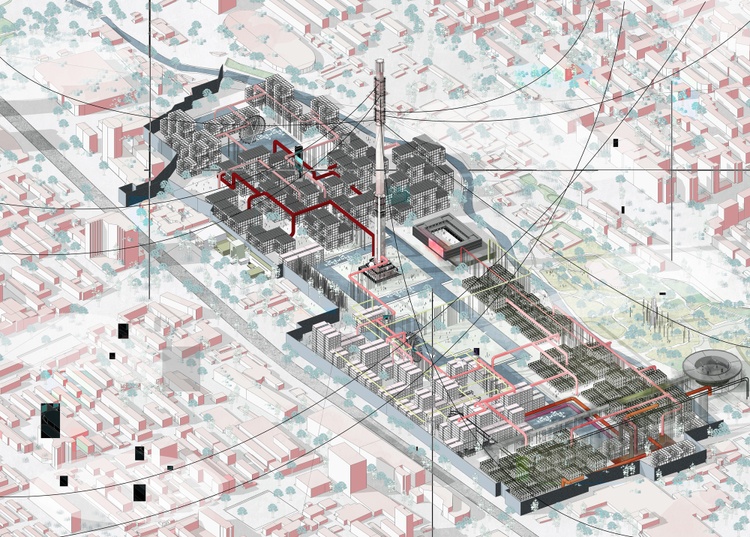Leading Reasons to Select CDA Architects for Your Residential or Commercial Layouts
Leading Reasons to Select CDA Architects for Your Residential or Commercial Layouts
Blog Article
Recognizing the Collaborative Process In Between Designers and Designers in Modern Building Projects
The joint procedure between designers and designers is crucial in modern-day construction projects, as it balances layout intent with design feasibility. This partnership not just influences the aesthetic and practical elements of a task however additionally plays a critical duty in addressing sustainability difficulties. By employing reliable interaction techniques and leveraging sophisticated modern technologies, such as Building Info Modeling (BIM), teams can function a lot more cohesively. The complexities of this cooperation typically existing unique difficulties that can hinder development. Exploring these characteristics exposes understandings that can dramatically impact project results and total industry criteria.
The Importance of Collaboration
The joint harmony between architects and designers is essential for the successful understanding of any building project. This collaboration brings together unique competence and point of views, making it possible for the integration of innovative layout with sensible design remedies. By functioning with each other, designers and designers can make sure that a job not just fulfills aesthetic and functional needs but likewise abides by safety, sustainability, and financial restraints.
Collaboration fosters a common vision, assisting in the placement of objectives and expectations from the beginning. This positioning is vital in dealing with possible difficulties and mitigating risks that could develop throughout the job lifecycle. A collaborative strategy enables for the effective appropriation of resources, maximizing both time and expense.
The importance of partnership includes the repetitive process of style and building, where comments from designers can educate building decisions, bring about even more practical and sustainable styles. Alternatively, designers can influence engineers to assume artistically concerning how to accomplish architectural integrity without compromising artistic intent. Eventually, the joint connection between designers and designers is not simply advantageous; it is essential to the production of high-grade, useful, and cutting-edge constructed settings that satisfy the demands of society.
Communication Methods and Tools
Reliable interaction strategies and tools are vital for promoting partnership in between designers and engineers throughout the task lifecycle. Developing clear networks of interaction is vital to ensure that all staff member are aligned with job objectives, timelines, and responsibilities. Routine conferences, both in-person and virtual, supply possibilities for stakeholders to review development, address concerns, and make notified choices.
Using job management software application, such as BIM (Building Details Modeling) systems, boosts partnership by enabling real-time sharing of style adjustments and technical specs. These devices facilitate openness, allowing designers and designers to envision adjustments and evaluate their influence on the overall task.

Shared Objectives and Job Vision

Establishing common goals includes open discussion and a thorough understanding of each self-control's contributions. Designers commonly focus on layout intent, spatial relationships, and user experience, while designers stress architectural honesty, systems capability, and conformity with regulations (cda architects). When these point of views are aligned, the outcome is a natural job that sticks to both imaginative goals and technical usefulness
Moreover, a distinct project vision fosters responsibility among employee, motivating each participant to take possession of their function in accomplishing the preferred outcome. Regular check-ins and joint workshops can even more enhance this commitment, enabling changes to be made as the job advances. Ultimately, a shared vision not just improves synergy but likewise boosts the high quality of the last deliverable, causing successful job conclusion.
The Duty of Modern Technology
Leveraging innovation has actually come to be important in improving partnership in between architects and engineers. Building Details Modeling (BIM) stands out as an essential technology, permitting both designers and designers to create detailed 3D versions that encapsulate style intent and architectural integrity.
Moreover, cloud-based systems allow seamless collaboration, permitting project stakeholders to access and update job data from anywhere. This cultivates a society of openness and accountability, as modifications can be tracked and evaluated in real-time. Furthermore, mobile applications more improve communication, providing on-site teams with immediate accessibility to project requirements and updates.
Arising modern technologies such as artificial intelligence and equipment discovering are also beginning to contribute in anticipating evaluation, assisting groups determine prospective concerns prior to they occur. Eventually, the role of innovation in architecture-engineering collaboration not only boosts workflow efficiencies yet click this additionally boosts development, causing even more effective task outcomes. By welcoming these technical advancements, designers and engineers can make certain a much more cohesive and effective joint process throughout the construction lifecycle.
Situation Researches in Successful Collaborations
Countless study show the profound impact of reliable collaborations between architects and designers on project outcomes. One notable instance is the partnership on the High Line in New York City, where landscape designers, engineers, and metropolitan coordinators functioned together to transform a deserted rail line right into a vibrant public park. This multidisciplinary strategy not only boosted the aesthetic high quality yet additionally made certain architectural safety and ecological sustainability.
One more exemplary case is the design and building of the Sydney Music Hall. The collaboration in between architect JÃ ¸ registered nurse Utzon and structural designer Ove Arup exhibited ingenious analytical. Their cooperation enabled for the famous shell-like design while resolving intricate engineering difficulties, inevitably resulting in an ageless building masterpiece.
The Burj Khalifa in Dubai additionally shows the relevance of collaborative initiatives. cda architects. The combination of design and engineering competence enabled the task group to accomplish unmatched elevations while adhering to safety and security laws and aesthetic vision
These examples emphasize the importance of communication, count on, and shared purposes. In today's complicated construction environment, such partnerships are important to navigating difficulties and providing projects that satisfy both functional and visionary goals.
Final Thought
In final thought, the cooperation between designers and designers is crucial for the success of modern building jobs. Reliable interaction methods, a common task vision, and the assimilation of sophisticated innovations are vital parts that promote this partnership.
Report this page